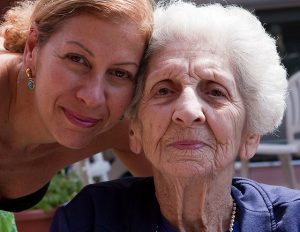Guest Blog:Tips For Moving Senior Citizens
Moving from one home to another is seldom easy — in fact, it’s considered one of the most stressful life events people experience. However, the process can be especially tough for senior citizens. Whether you’re an older adult about to leave your long-term home or you’re the child of a senior getting ready to help a parent leave his/her home, here are some important tips to keep in mind:
- Acknowledge Emotions. Anytime you’re talking about leaving a long-term home, you’re talking about more than changing addresses. Saying goodbye is hard. Instead of ignoring the sadness that accompanies such a move, process it. Remember, it’s normal to feel some sadness, whether you’re moving into an assisted-living facility, in with relatives or simply to a smaller place.
- Pare Down Possessions. When it comes down to the physical moving process, the less you have to move, the easier the transition. Rather than packing every worldly possession and forcing yourself to organize later, take the time now to downsize. Go through all your furniture, knick-knacks, mementos, gadgets and so on, and determine whether you’ll truly need those items in the new place. Separate everything into “keep,” “give away” and “trash” piles. If you don’t want to hand down or donate certain items, plan a garage sale to get a little extra cash in the process.
- Hire Professional Movers. Don’t endure unnecessary stress by managing the moving process alone — hire movers. Find a company that specializes in assisting with smooth transitions, and enlist its help to transport furniture and boxes to their intended destinations. If some things are going to a new home and others are going to friends and family, communicate to your moving company which items go where.
- Pack an Overnight Bag. Set aside a few changes of clothes, important toiletries, towels and sheets to have with you for that first night or few nights in your new home. Instead of rifling through boxes and feeling overwhelmed with all there is to unpack, there will be a little normalcy — even when you’re still getting settled. Other good items to bring are a first-aid kit and flashlight.
Moving as a senior citizen isn’t easy, but it can be a smoother, more pleasant experience with a little planning. Use the tips above to aid your upcoming move.
Chris Crompton is a marketing manager for TSI, a leader in the shipping and freight industry since 1989. TSI offers low rates and professional service on long distance small moves and shipments.
Guest Blog Self-Care Tips For Caregivers
Self-care is defined as caring for ourselves physically, psychologically, spiritually, and socially. Because when we are focused on those things outside of ourselves it is so easy to overlook our own needs, self-care is a concept that applies to everyone.
For example, imagine that your boss lays a new project in your lap with an impending – and almost impossible – deadline. You put everything aside because the project requires all of your energy. So, you don’t do those stretches that keep your low back pain at bay. You don’t return non-professional emails, texts, or messages. You reschedule every appointment that doesn’t apply to this project.
In the end, the project does get done, but you find yourself completely exhausted, and in serious need of a break. The truth is, any of us can find ourselves in this situation at any time, but especially when we undertake the care of a dependent other.
People who rely on us for their daily living cannot be put on the back burner. Maybe they need help getting dressed, making meals, taking a bath, or just getting out of bed. (In some cases, the care may mean just being turned in bed to avoid developing bedsores.)
For caregivers, the work never ends. Every single day they are a requirement to another person and it is simply not possible to call in sick when someone else depends on you more than you need a day off.
The result is that caregivers are often the worst at self-care. When this happens, they can end up feeling exhausted, irritable, resentful, and hopeless. And the quality of care they can provide suffers. For caregivers, quality care starts and ends with consistent self-care.
Remember The Why
Tony Robbins is famous for always asking for the WHY. The reason for this is because when we have a why, we can find a how. This becomes monumentally more important when what we are doing is hard, long-lasting, and with little gain.
It is these times when it makes the most sense to give up because the energy we put out can seem out of proportion to what we get back. But this is also when it is so important to stop and ask ourselves why we got into this work in the first place. What was it about caring for others who depend on us that attracted us? Why did we choose this profession over others? And why do we keep at it despite the long, exhausting hours?
Answering questions like this will bring us back to the fundamental reasons for our decision to go into caregiving. It will also bring us back to a fundamental human need – which is to have a purpose.
To be content with our lives, we must feel that what we do has meaning. We must feel like we matter in one way or another, and that what we do makes a difference. Whatever our why is, it carries us forward when times get challenging. It reinforces us, stabilizes us, gives us solid ground on which to stand.
Find Something To Be Grateful For
Gratitude is such a powerful emotion that even just keeping a daily gratitude list has been shown to have a dramatic effect on many measures of our lives – from happiness and wellbeing to creativity and productivity.
While gratitude can be described as a “top end” emotion that is most effective when everything else in our life is going well, in many cases, it is just the opposite. It is through being grateful that we find a way to get through things that confound us, challenge us, overwhelm us, and make us want to quit.
For caregivers, gratitude is especially effective because not only is caring for another person inherently hard, when they are dependent, it is without end. It is at these times that our psychological systems most need bolstering, and on a daily basis.
What gratitude effectively does is bring us out of the dreariness of our daily lives and into a new perspective where things look different. And when we begin to see differently, those things we see begin to change. The sunrise looks brighter, the trees greener, the flowers brighter, and the people more kind.
Make Humor A Part Of Your Daily Life
Humor is a wonderful resource that has been associated with feelings of wellbeing, happiness, vitality, creativity, and even cognitive functioning. Humor is something that has also been demonstrated in a variety of species and seems to play a central role in bonding. But perhaps most importantly, humor acts like a tonic for the brain.
Humor allows us to temporarily escape our reality, to transform our situation is a way that brings us levity and lightness. When we can stop to laugh, we can, for the moment, suspend any negative emotions we might otherwise be feeling. We can, momentarily, make our situation and ourselves feel different.
For caregivers, humor is an essential resource because it acts like a reset button. Performed regularly, humor doesn’t just make every day better, it makes the tough ones survivable.
Caring for another person may be one of the most challenging jobs we can choose. But it is also one that is essential. By remembering why we choose to become caregivers, finding things to be grateful for and incorporating humor into our daily lives, we can keep ourselves at our best for ourselves and those who depend on us every day.
Guest Blog: Burnout: Tips for Family Caregivers
By Dr. Nanette J. Davis, Ph.D.
Caregiving has often been compared to a roller coaster ride, with its inevitable ups and downs. This is especially true as your loved one deteriorates and faces the end of life. If you’re one of the 65 million family caregivers who has been feeling overwhelmed for too long, “burnout” may have set in.
Take that first step. Identify and claim the full range of your emotions—the anger, indifference, anxiety. In a recent study, 50% of family caregivers confessed to feeling depressed and some 69% admitted that frustration drove them to place their loved one in care. You may be experiencing the following, as well:
- Fatigue
- Confusion over role reversal
- Loss of interest
- Withdrawal or isolation from friends and other support persons
- Irritability
- Illness
- Poor sleep
- Desire to harm self or others
These unwanted reactions can also be compounded by the guilt and shame about feeling this way. Here are a few suggestions that might make a big difference.
- Make a point to engage in outside activities for maintaining a sense of health and well-being. Sure, it could feel like “one more thing” to do. But if you choose your outside activities wisely—staying away from demanding people or events—you could feel surprisingly refreshed.
- Seek and accept outside help. Once you admit to yourself and others that you can’t do it alone, the burden suddenly lifts. Good starting points are: local organizations, social service agencies and faith communities. Don’t overlook family, friends and neighbors who may be able to lend a hand.
- Allow your loved one plenty of opportunities to practice functional skills—as hard as it may be. Feeling as independent as possible satisfies a basic human need, even for a seriously ill person.
- Consult with a geriatric specialist, pastor or counselor about the right course of action if your loved one has become overly dependent or has exhausted your resources—physical, emotional or financial.
- Admit that you are juggling multiple roles, and engaging in an ever-so-delicate dance of support. The dance can go on as long as you allow the role of who leads and who follows to shift as circumstances change.
- Pay attention to your own needs. You can achieve balance when you include time to sleep, exercise, eat and attend to your own medical needs. Time spent with family, friends or just being alone helps you bounce back, too.
- Practice saying—maybe even forcefully—“no” when appropriate, and “yes” when someone offers to help.
- Seek out quality respite care.
- Enjoy an occasional movie or lunch with a supportive friend.
- Don’t expect too much from yourself.
Continue to recognize, acknowledge and accept your difficult emotions, so you can then work on setting boundaries, letting go of control and developing coping skills. For example, meditation and yoga can be incredibly relaxing.
Your commitment to your loved one can be a renewable resource if you take the right steps and are willing to change strategies when the “same ol’, same ol’” isn’t working anymore.
You can visit Dr. Nanette’s ABCs of Caregiving blog at http://www.abcsofcaregiving.com/
Guest Blog: 6 Ways to Naturally Reverse and Heal Decayed Teeth
There is no argument about one thing – brushing is important when you have dental braces. Without proper oral care, you may face issues like tooth decay or cavities. If you do notice a cavity, there is a way to naturally reverse the decay and heal the teeth. Let’s see how you can do that.
- Make Changes in Diet
You can reverse tooth decay by making a few changes in your diet. Some adjustments include:
- Limit the consumption of sugary foods and drinks as sugars can cause plaque and cavities.
- Consume more calcium-rich foods such as broccoli and dairy to strengthen the teeth.
- Add Vitamins and Supplements to the Diet
Certain vitamins help in producing saliva. This, in turn, prevents the bacteria from staying on the teeth. Some vitamins also help in making the teeth stronger. Adding nutritious food to the diet can heal your teeth naturally.
Foods that promote salivation include peas, bananas, and brussels sprouts. Take supplements of Vitamin B, D, iron, and magnesium if you cannot get them from your diet. Eating whole-grain foods and seafood can give the required dose of nutrients and improve oral health.
- Practice Oral Hygiene
Good oral hygiene practices help in protecting the teeth from early decay. Also, make sure to follow a strict oral hygiene routine when you have braces.
- Brush twice a day to remove food particles stuck in the teeth and to keep them clean.
- Floss at least once a day to remove plaque and food that gets stuck under the gums and brackets
- Use a mouthwash to get rid of bacteria in the mouth
- Maintain Necessary pH Levels in the Mouth
Our teeth stay healthy in an alkaline environment. As soon as the pH levels start to dip below the neutral 7, our teeth will start to break down and demineralize.
When there is a pH imbalance, it can create an environment for bacteria to grow and thrive. Avoid foods that can cause pH imbalance such as coffee, citrus fruits or sugars.
Use a remineralizing toothpaste as it can increase the pH level of the mouth and strengthen the tooth enamel.
- Consume Natural Probiotics
Bad bacteria that cause infection search for smaller areas in the teeth to hide. They would decrease the pH value of the mouth as well. Probiotics help in offsetting the acidic pH in the mouth. Consume foods that are rich in probiotics such as curd, kombucha or sauerkraut.
These foods stimulate the production of healthy bacteria in the mouth. This further helps in preventing plaque build-up or decaying of teeth.
- Oil Pulling
This is a simple yet very effective detoxification process for teeth care that includes swishing oil in your mouth for a few minutes. This technique can prevent plaque build-up and gum diseases like gingivitis. Do not swallow the oil and rinse with warm saltwater after swishing. Follow this by brushing your teeth.
Though these natural methods can be very effective, remember that everyone responds differently to these methods. You must also visit your orthodontist regularly to make sure there are no dental problems.
Author Bio:
Dr. Satish Pai is an orthodontist and an Ivy League trained dentist who has served as a faculty at Columbia University. He believes that a perfect smile not only makes a person look great but feel great. As the founder of Putnam Orthodontics and a Partner at Rome Orthodontics, he is dedicated to providing the best orthodontic treatments to his patients. He also writes to educate people about everything orthodontics and the importance of correctly aligned teeth along with good oral health. In his free time, you can find him golfing, doing yoga or surfing, and spending time with his family.




